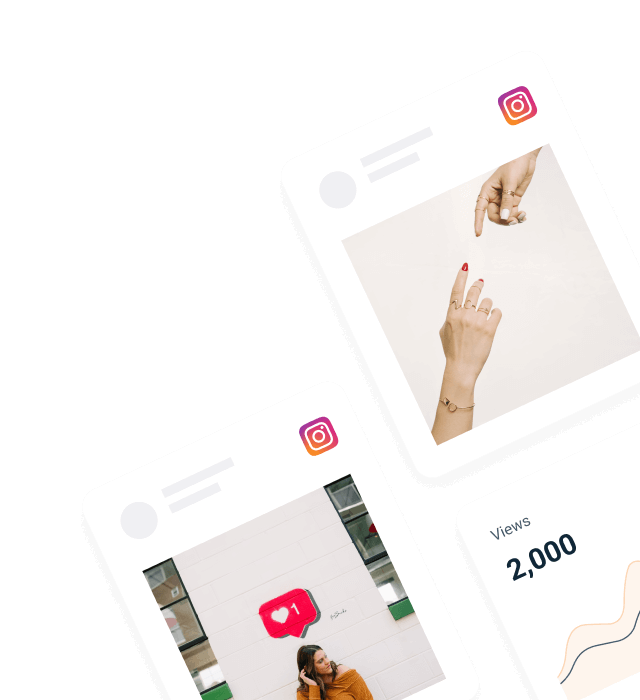How to keep information accurate, fast, and human when everything hits the fan
When a crisis hits, information moves faster than your approval process. Social media becomes the first and loudest channel — whether you’re ready for it or not. For communication teams, crisis managers, and marketing leads, the challenge isn’t what to say, but how quickly and consistently you can say it everywhere your audience is looking.
This guide breaks down how social media displays can strengthen your crisis communication system. You’ll learn how to:
- Publish verified updates in real time, without waiting on web or IT support.
- Keep messages consistent across all channels — from social feeds to digital signage.
- Moderate harmful or misleading content before it spreads.
- Rebuild trust through visibility and transparency, not silence.
Expect a practical walkthrough for teams who want to act fast and communicate clearly — not just during the next crisis, but in every moment that matters.
Why crisis management now needs a social media strategy that moves in real time
Every organization has a crisis plan on paper. Few have one that actually works when the news hits. The difference often comes down to timing and visibility.
Crises rarely wait for official statements. They unfold publicly on social media, where every minute of silence adds pressure and speculation. Whether it’s a product recall, data breach, or safety incident, people turn to digital channels first.
A social media display bridges the gap between internal communications and public visibility. It connects what’s already happening on your verified social accounts to the places your audiences are watching — your website, internal dashboards, and digital displays.
Instead of waiting for IT or a web editor to post an update, your latest social post can appear instantly on every relevant screen. That’s what makes displays a practical layer in modern crisis management — not as a marketing gimmick, but as infrastructure for transparency and speed.
The need for speed: why timing makes or breaks crisis communication
In crisis management, speed is the difference between control and chaos.
When updates are delayed, people fill the silence with their own assumptions. Even a few hours without clarity can turn a manageable issue into a trending story. Every communication team knows that waiting for legal approval or web edits slows things down — but during a crisis, that delay directly affects trust.
Social media displays reduce that lag. They mirror what’s published by your official account, instantly. You post once, and the update appears wherever you’ve embedded the display — your homepage, intranet, or lobby screen.
Practical examples
- University campuses: during weather-related shutdowns or emergencies, a display can show the latest verified updates from the school’s official X or Threads account in dorm lobbies or dining halls.
- Corporate offices: when an operational issue or security incident occurs, social posts can automatically show up on internal portals and reception screens, keeping staff informed without additional tools.
- Production or logistics companies: when deliveries, schedules, or operations are disrupted, the same display can show live updates from central communication teams.
The takeaway is simple: automation keeps your updates visible. It prevents the delay that comes from routing everything through web admins or email chains.
When people can see real-time information in the same minute you publish it, you stop rumors before they start.
Consistency across channels: keeping one version of the truth everywhere
When multiple departments handle communication, consistency becomes one of the first things to break. A social post might say one thing, the homepage says another, and an internal memo contradicts both. That confusion erodes confidence faster than the crisis itself.
Social media displays remove that risk by connecting every channel to the same verified source — your official accounts.
When your social team posts a message approved by the crisis manager, it appears automatically across all linked displays. There’s no chance of someone forgetting to update a secondary page or publishing an outdated statement.
Why this matters
- Less manual work: instead of sending new copy to five different teams, one post updates them all.
- No version conflicts: every viewer — employees, press, customers — sees the same statement.
- Public proof of transparency: when updates stay visible and consistent, they’re harder to misinterpret.
Implementation steps
- Identify which official accounts will serve as your “source of truth.”
- Set up a social media aggregator to pull updates from those accounts automatically.
- Embed that feed across your website, intranet, and on-site displays.
- Establish who can post and approve updates before they go live.
This approach turns your social platforms into a real-time information network — one that scales across departments and physical spaces.
Building a reliable real-time update system
A crisis-ready setup isn’t about more software. It’s about building one dependable workflow that doesn’t break under pressure.
Step 1. Define your publishing hierarchy
Who posts first? Who approves? Who monitors comments? These decisions should be made before any crisis occurs. Write them down and test them in simulations.
Step 2. Choose your core channels
Pick two or three social platforms that are already established as official. Trying to update too many dilutes your focus and increases risk.
Step 3. Connect your channels to a display system
Tools like Juicer let you connect verified accounts and hashtags into one unified feed. The system can automatically pull posts from platforms like X, Instagram, LinkedIn, or YouTube and refresh in real time.
When embedded on your homepage, internal site, or digital signage, this ensures your message appears instantly without extra steps.
Step 4. Set backup workflows
Have an alternative post channel ready. If your main platform goes down or access is lost, your team should know exactly where to post and how to re-route that content.
Step 5. Test your refresh and moderation intervals
Depending on your setup, posts can refresh every few minutes or even instantly. During drills, test how long it takes for new updates to appear. Confirm that moderators can approve or reject posts quickly.
A reliable real-time system doesn’t just help during an actual crisis — it builds confidence across your organization that communication won’t break when it’s needed most.
Moderation, misinformation, and managing sensitive content
Speed is critical, but so is accuracy. A rushed update can do more harm than a delayed one if it spreads the wrong message.
Moderation is the safety layer that protects your brand’s credibility. It filters what goes public and ensures that only verified or approved content appears on your displays.
Moderation options that matter
- Manual moderation: human review before a post is visible. Use this when dealing with sensitive topics like customer safety, internal investigations, or legal matters.
- Automatic filters: set keyword rules to hide posts containing misinformation, speculation, or offensive content.
- Whitelists: restrict display access to posts from verified accounts only — such as your CEO, PR lead, or corporate communications handle.
- Ban lists: prevent posts or comments from known misinformation sources or fake profiles from being displayed.
Juicer includes all of these options in its moderation system. It gives crisis teams the ability to update quickly without losing control over what gets shown.

Best practices for moderation during a crisis
- Establish clear rules in advance. Define what qualifies as “approved,” “pending,” or “rejected.”
- Keep the moderator role separate. The person writing updates should not also be the one approving them.
- Document every decision. If a crisis escalates, you’ll need an audit trail for what was published and when.
- Review tone as much as content. A message can be factually correct but emotionally tone-deaf.
A good moderation setup doesn’t slow you down — it gives you confidence to post faster, knowing guardrails are in place.
Using social media displays to rebuild trust in difficult moments
During a crisis, your audience wants two things: clarity and honesty. Social media displays make both visible.
Instead of hiding behind delayed press releases, you can show that your organization is actively communicating. Frequent, visible updates send a signal that you’re in control and willing to share what you know as you know it.
How displays contribute to trust
- Real-time transparency: when updates appear automatically, your audience can see the flow of communication, not just the end statement.
- Context in one place: rather than chasing multiple accounts or media reports, viewers can follow a single feed on your website or screen.
- Supportive messages matter: during tough moments, highlighting positive or supportive comments helps counter negative sentiment and shows community engagement.
Example scenarios
- Retail brand managing a recall: embedding an official feed on the homepage keeps customers informed about next steps and safety instructions.
- University addressing a campus incident: digital screens in common areas display verified updates and messages of reassurance from faculty and student services.
- Production company facing operational disruption: live feeds on internal dashboards ensure all employees see consistent updates, reducing confusion.
These actions don’t just contain damage — they show values in practice. Transparency, empathy, and responsiveness aren’t abstract PR terms when they’re displayed publicly.
From crisis to clarity: how to turn lessons learned into stronger systems
A crisis ends when communication stabilizes — not when the headlines fade. The next step is turning the experience into a stronger, more resilient system.
Post-crisis checklist
- Audit your response timeline. How long did it take to post the first message? Were there bottlenecks?
- Analyze engagement patterns. Which updates had the highest visibility? Which times or channels performed best?
- Review moderation logs. Did harmful content slip through, or were too many posts held back?
- Collect feedback from stakeholders. Ask your crisis team, legal, and customer service what worked and what didn’t.
- Update your playbook. Adjust workflows, approval rules, and platform access based on what you learned.
If you use Juicer or another aggregator, analytics can show how often your displays refreshed, how audiences engaged, and which platforms contributed most to visibility. That data makes your post-crisis review evidence-based, not anecdotal.
The goal is not perfection but preparedness. Every crisis teaches something about coordination, visibility, and timing. The teams that analyze and apply those lessons recover faster and earn back trust sooner.
How Juicer fits into your crisis management strategy
Juicer isn’t a crisis communication tool by label. It’s an aggregation platform designed to make information flow faster and more consistently. In a crisis, that’s exactly what you need.
Here’s how it strengthens your system:
- Centralized control: pulls posts from multiple official channels into one moderated dashboard.
- Real-time display: updates instantly across your website, event pages, or on-site monitors.
- Multi-user management: gives teams, campuses, or branch offices controlled access without risking cross-posting errors.
- Moderation and filtering: allows both automatic keyword filters and manual approval before posts go live.
- Analytics: tracks engagement and visibility so you can review what worked.
- Compliance and reliability: GDPR-compliant, secure, and used across industries that depend on communication clarity — from universities to SaaS and retail companies.
For communications teams, this means you can move from manual updates to a system that’s automatic but still safe.
When your brand’s reputation depends on seconds, not hours, automation isn’t a luxury. It’s risk management.
Next steps: setting up your own crisis-ready display system
If you don’t have a crisis-ready social display setup yet, it’s not complex to build one. It starts with clarity, not code.
Your action plan
- Map your crisis communication chain. Identify who posts, who approves, and who monitors.
- Decide which channels count as official. Public confusion usually starts with too many voices.
- Integrate your social accounts into a display platform. Use an aggregator that allows moderation, filters, and instant embeds.
- Test it regularly. Run quarterly drills where your team simulates a crisis and measures time-to-publish.
- Update rules often. Platforms change, and so do risks. Keep your system current.
Recommended practices
- Keep displays limited to verified content.
- Avoid overloading your feed with commentary.
- Make sure internal teams get information first — then go public.
- Always prioritize factual updates over PR tone.
A social media display isn’t a marketing extra. It’s a bridge between communication and clarity — one that works across every channel and every screen.
If your crisis plan still depends on slow approvals, outdated pages, or manual updates, it’s time to modernize. Juicer gives teams a simple, reliable way to share updates instantly, moderate safely, and communicate with confidence when it matters most.
FAQs: Going deeper into social media crisis management
How can social media displays support a crisis management team during a major crisis?
When a crisis breaks, your social media team and crisis management team need the same source of truth. Displays help unify both by showing verified updates from one platform — the company’s official social accounts. This removes ambiguity about what’s been said publicly, so everyone from PR to legal to customer service can align their response strategy. It also gives leaders immediate visibility into what consumers are seeing, making informed decisions faster.
What role does social media content moderation play in protecting a company’s reputation?
Moderation isn’t just about deleting unwanted content. It’s a form of damage control. When negative content, misinformation, or offensive comments start spreading, social media moderation tools let you filter them before they appear on public feeds or embedded displays. That protects your brand values and your audience. In a social media crisis, every visible post represents your company’s response — moderation ensures only accurate, responsible updates make it through.
How can a business use social media displays for crisis prevention, not just reaction?
Most crisis scenarios show warning signs before they reach global headlines. A consistent display of user generated content and customer feedback helps you spot potential threats early. For example, a restaurant chain might notice recurring complaints about a product issue or hygiene concern before it escalates. By tracking this activity across social media platforms through an aggregated dashboard, you can respond quickly and prevent serious issues from turning into full-scale crises.
Can social media analysis really predict potential crises?
Yes, when it’s structured properly. Sentiment analysis tools combined with social aggregation let your team monitor shifts in tone or emotion across large volumes of social media content. A sudden rise in negative mentions or sarcasm toward your brand promise often signals trouble. The best crisis management plans use this insight for crisis prevention — spotting trends, setting new rules for escalation, and acting before the problem hits news outlets.
How should a company respond to public criticism or unexpected controversy online?
Every organization faces unexpected controversy at some point — a misinterpreted campaign, a human error, a sensitive issue mishandled. The key is visible accountability. Instead of relying on press releases that appear hours later, use your verified social channels to publish a clear statement and mirror it across your digital displays. Respond quickly, stay factual, and update frequently. Social media users reward consistency and honesty more than polished apologies.
What are the biggest mistakes companies make when managing crises across social media platforms?
- Too many voices: multiple teams posting unapproved messages creates confusion.
- No specific guidelines: without set rules, each team improvises.
- Over-editing: trying to perfect every post slows the response.
- Ignoring moderation: failing to control comments can undo a well-written statement.
- Stopping too soon: once the story fades, many brands stop updating. A strong company’s response includes follow-ups and lessons learned.
These mistakes weaken credibility and can affect everything from customer trust to stock price.
How can digital displays help maintain trust during natural disasters or local emergencies?
During natural disasters, infrastructure often fails before communication does. Social media displays on campus buildings, retail stores, or corporate offices keep the latest verified updates visible even if other systems go down. They also show supportive messages from the community, reinforcing shared resilience and brand values. For universities or public organizations, this transparency strengthens safety perception long after the event ends.
What should a crisis management plan include for social media teams?
A reliable plan should clearly define:
- Who posts first and who approves.
- Which platforms are official sources.
- How moderation works — what’s auto-filtered, what requires review.
- When to involve leadership or legal.
- How to log every update for accountability.
These details keep your business coordinated when emotions run high. They also make it easier to review and improve performance after the crisis passes.
How can one platform improve coordination between departments during a crisis?
Using one platform for social media aggregation simplifies every part of crisis management. The social media team posts once, and the update appears instantly on your website, digital signage, and internal dashboards. That means the crisis management team, HR, and customer support all see the same message in real time. It removes the friction of emailing updates, reduces human error, and ensures your company’s response stays consistent everywhere.
How does public feedback after a crisis influence long-term recovery?
Customer feedback isn’t just a reputation indicator — it’s insight. Tracking user generated content and comments across social media after a major crisis shows how the public feels about your recovery efforts. If sentiment improves steadily, it signals that your communication is landing well. If not, you may need to clarify messaging or take additional action. These insights help protect your market value and shape stronger crisis management plans for the future.
What are some specific guidelines for handling sensitive issues on social media?
- Stay factual. Speculation creates risk.
- Avoid emotional language. Clarity beats empathy statements that sound rehearsed.
- Don’t delete legitimate criticism. Hide only harmful or false posts.
- Maintain consistent tone across all updates.
- Confirm accuracy before posting. Even small errors can cause lasting damage.
These practices create stability and predictability, which are vital when consumers are watching closely.
How can a business use displays to align with brand values during serious issues?
In a crisis, brand values shouldn’t disappear behind legal phrasing. A transparent display of your company’s response — including real-time social updates, safety information, and community feedback — shows integrity in action. It reinforces your commitment to consumers and employees while keeping communication practical. That alignment between message and behavior is what ultimately protects a company’s reputation and strengthens its brand promise.

How does automation help businesses respond quickly without losing control?
Automation doesn’t replace judgment — it removes delay. Aggregating and displaying posts automatically ensures new information appears immediately, while moderation features keep harmful or off-brand content out. You can set filters for language, keywords, or user handles so the system follows your pre-defined crisis rules. It’s the most efficient way to manage time-sensitive communication while maintaining full oversight.
What lessons can companies learn from industries that handle constant potential threats?
Sectors like food service, travel, and energy face potential crises every week — contamination risks, flight delays, or equipment faults. Their crisis prevention playbooks focus on visibility and escalation. A restaurant chain, for example, might use social media displays to show real-time hygiene updates or safety confirmations during a recall. The principle applies to any business: make accurate information visible first, then handle internal review later. Visibility is protection.
Why do some brands recover faster after a crisis?
They communicate early, often, and clearly. Their crisis management plans include defined roles, automated publishing, and transparent feedback loops. They listen to social media users through sentiment analysis and respond in ways that reflect their brand values. They don’t over-promise or over-correct. Instead, they stay factual, keep posting, and show consistent care. Over time, that reliability rebuilds confidence faster than any marketing campaign can.




